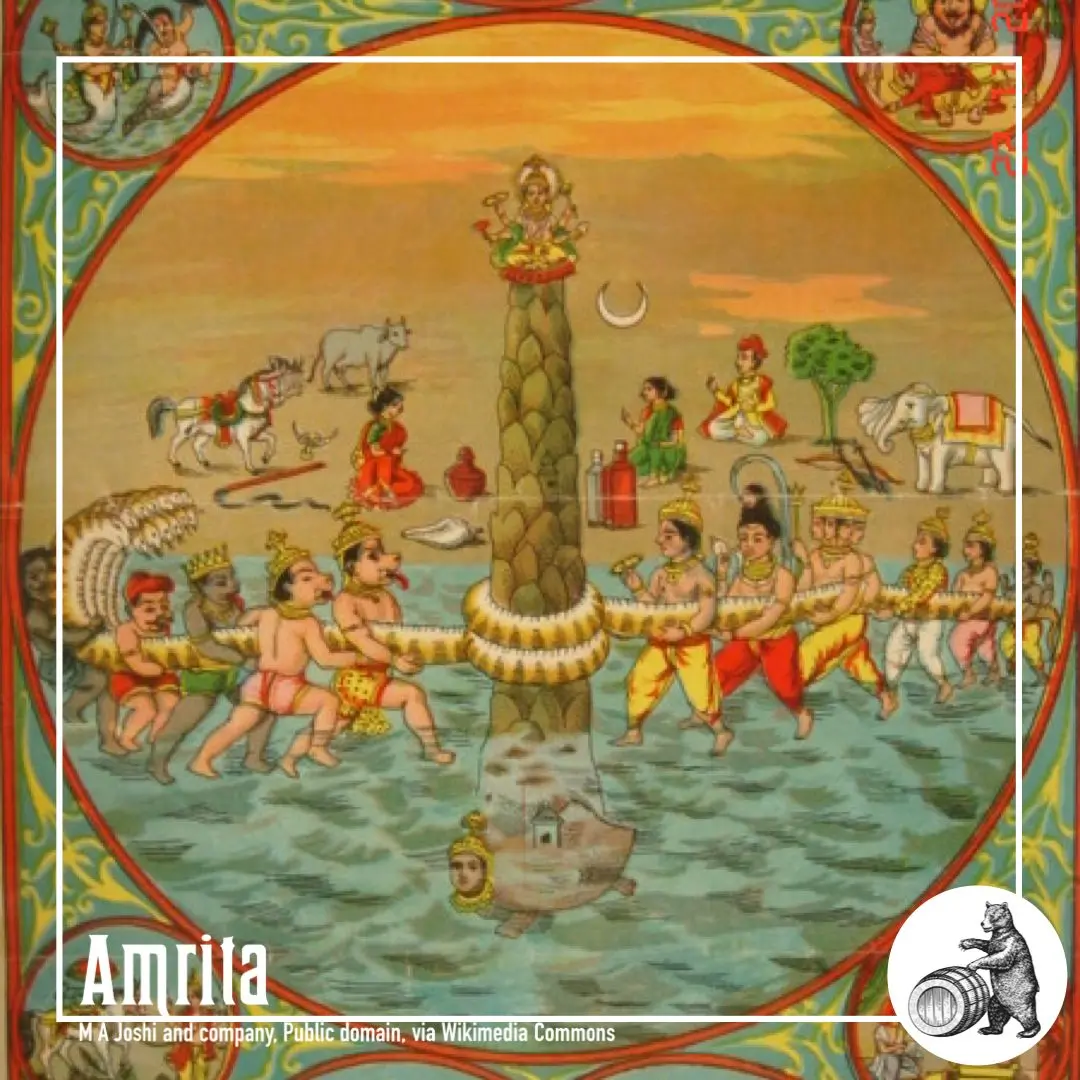Amrita
The Drink Of Immortality
Amrita, a revered elixir in ancient Indian Vedas, is often referred to as the nectar of the gods, known by other names such as Soma or Madhu. Beyond its literal sense, Amrita embodies the concept of immortality in Hindu mythology.
The Saga Of Churning the Ocean Of Milk
In the tapestry of Hindu lore, Amrita is depicted as an extraordinary elixir bestowing longevity and safeguarding from mortal peril. The saga of the churning of the ocean of milk (Kshira Sagara) unfolds, where the serpent Vasuki, at the behest of Vishnu and Brahma, encircles the world mountain Mandara (Meru). Kurma, the tortoise and an incarnation of Vishnu, supports the mountain on her shell, while both gods and demons set the mountain in motion by tugging Vasuki. After extensive churning, a resplendent woman named Lakschrni, adorned in yellow-gold attire, emerges from the froth, holding a bowl made from a precious stone containing Amrita—the elixir of immortality. The gods (devas) partake in Amrita without offering it to the demons (asuras), sparking a fierce battle that culminates in the victory of the gods. Subsequently, Amrita becomes synonymous with the elixir consumed by the devas to attain immortality.
The Production of Amrita
Regarding the production of Amrita, the Rigveda hymns offer veiled clues. Soma, synonymous with Amrita, is believed to be derived from a plant thriving near rivers or lakes. This mountainous plant likely boasts yellow or golden-hued flowers, potentially explaining Amrita’s golden color. The plant, akin to a bush or tree, involves the priests pressing its “many limbs” to extract the precious juice. The priests combine the plant’s juice, often solely or occasionally with additional ingredients, with cow’s milk to concoct the (Soma) Amrita elixir.
In present-day India, some regions identify the Sarcostemma Acidum plant as the modern representation of the ancient Soma plant, valued for its purported healing properties. However, Indian Medicine describes the sap of Sarcostemma as toxic, bitter, acrid, cooling, alterant, narcotic, emetic, antiviral, and rejuvenating.
Read also about fire water is an elixir rooted in the quest for finding the water of life.
The Distilling Culture
BLOG
Embark on a global journey, and you’ll find that cultures possess tales that harken back to their ancient beginnings of distillation, brewing, and winemaking.
info@houseofapplejay.com
67 Fowler St, Bldg B, East Ellijay, GA 30540

